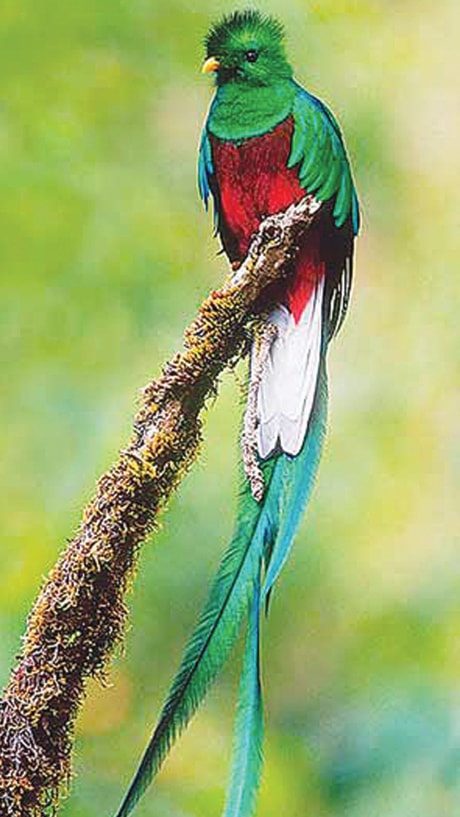I’m terribly sorry you haven’t heard from me for awhile. The reason for that is simple. I’ve been birding in foreign locales.
My husband, Larry, a friend, and I went to Costa Rica for three weeks in February. And, oh, what a wonderful time we had!
I got to see about 175 species of birds that I had never seen before, but because of the way we had our trip laid out, we weren’t just ticking off the birds that we saw.
We got to know most of the birds because we spent about five days in each of the places we stayed at. I have to admit, I am a “lister,” a person who keeps a list of all the birds they see.
But the thrill for me is not just finding a bird species once and then going on to the next species; instead it is to find that species on a number of occasions and knowing what it is without having to look it up in a bird book every time.
One place we stayed at was called Rancho Naturalista. We didn’t have to go anywhere except the back porch of the main building. They had hummingbird feeders there plus feeders out on the lawn, so the birds came to us.
In our first hour, we saw 11 different species of hummingbirds. It became our mission to be able to recognize both male and female of all eleven species. By the time we left, we were very comfortable IDing all of those hummingbirds.
As if simply identifying the birds wasn’t hard enough, some of the names of the species in Costa Rica are not familiar to us northerners. Not all of the hummingbirds are called hummingbirds.
There are names such as the mangoes, fairies, woodnymphs, barbthroats, hermits, mountain-gems, thorntails. Some of the names of other birds were like someone just described each bird and then that became the species name.
There were the yellowish flycatcher, black-capped flycatcher, tufted flycatcher, tawny-chested flycatcher. But then there are also strange names for species such as: Elaenia, foliage-gleaners, treerunners, and leaftossers. And how does one remember which one is a parakeet, a parrot or a parrotlet?
We were also at a disadvantage because we didn’t know any of the songs of the birds. Birding by ear makes things so much easier.
We did get to learn a few of the calls though. The first one that I started remembering was that of the Keel-billed toucan because it sounded a bit like a frog croaking. Then there was the great tinamou that called outside our cabin for five days straight, both morning and evening with a tremulous but loud whistle.
The one that got me going every time was the magnificent hummingbird. It sounded like a metronome. Tic, tic, tic, tic, tic, tic . . . that went on and on and on. I’d listen to that and would find my body moving in time with the metronome.
So, which bird of all of the species we saw was my favourite, you might ask? They were all so colourful and spectacular that it would be hard to pin one down, but perhaps I could go with the resplendent quetzal.
This particular bird is probably on everyone’s top 10 list of birds they want to see. The male really is resplendent.
He has four feathers that dangle up to 76 cm below his tail. His head, neck, wings and back are green and he has a bright red chest and belly. To watch him fly is a wonder. You get a flash of that red belly and see the streamers flying behind him. It is a sight to behold.
But now we’re back, plunged unceremoniously into cold temperatures with only the hardiest of hardy birds to watch.
But soon, soon, the migrants will be back and we can see lots of our own resplendent birds.
Judy Boyd is a naturalist with the Red Deer River Naturalists.
